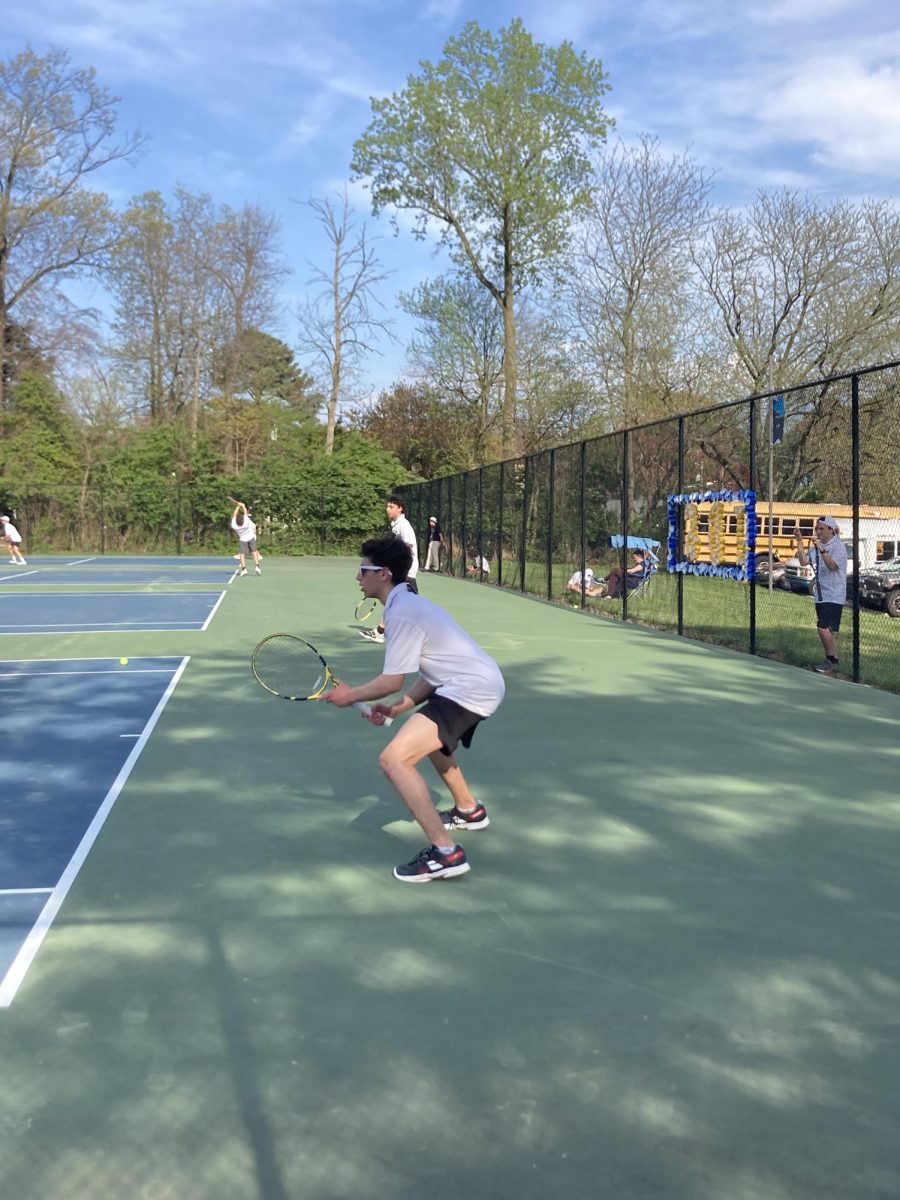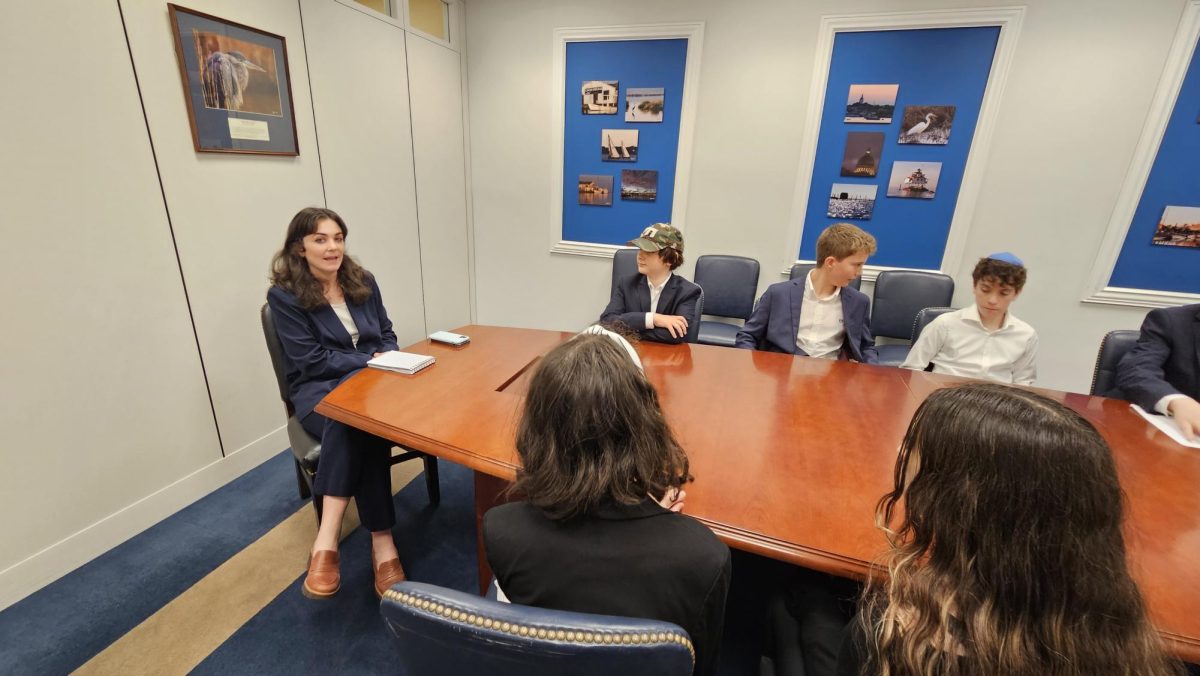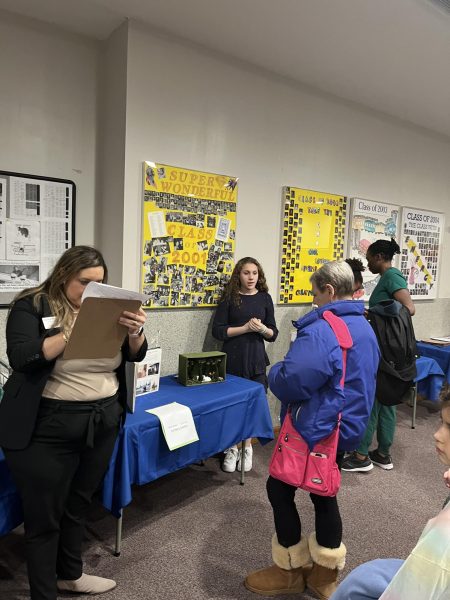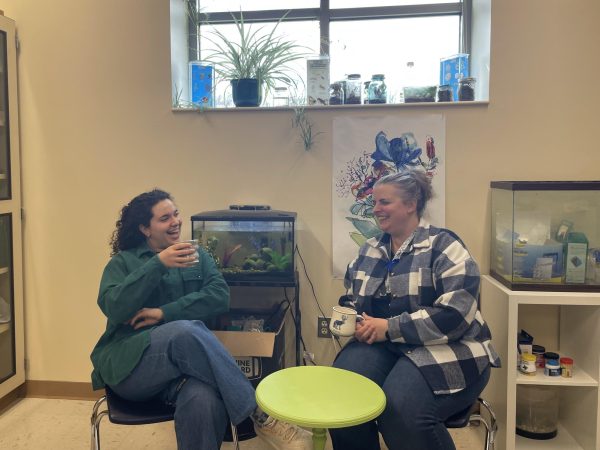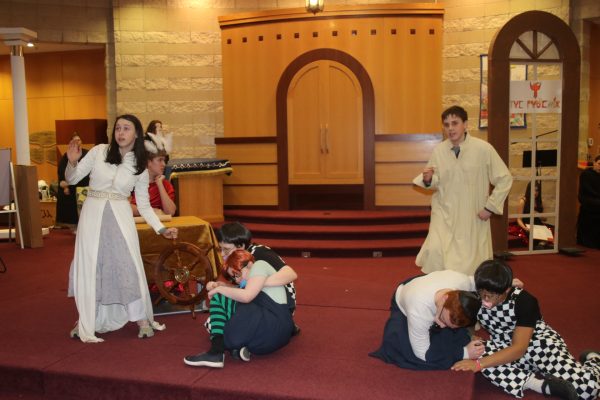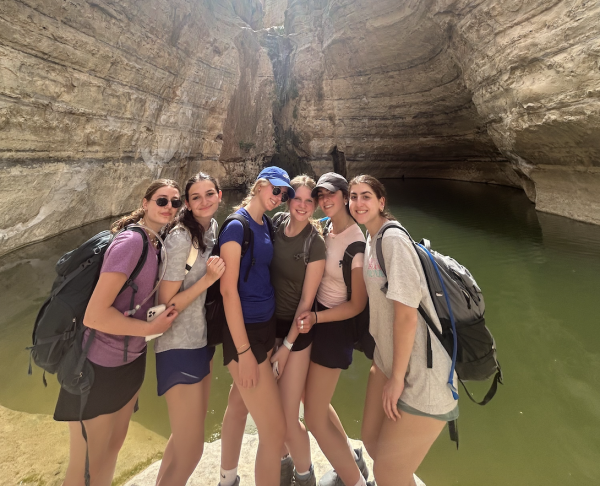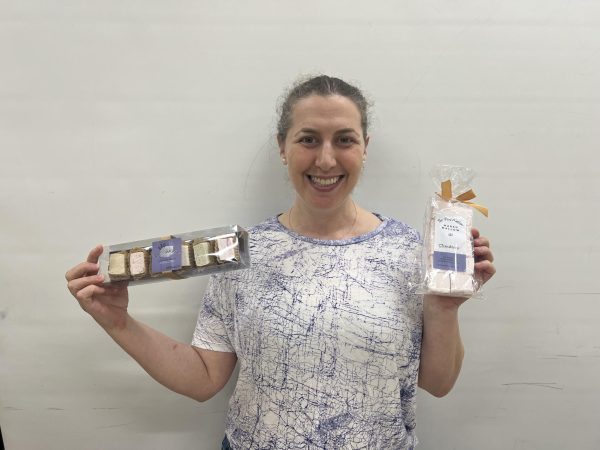Going in or staying home
February 1, 2021
Projected onto a screen and connected to a speaker, Jewish text and English teacher Grace McMillan Zooms into a classroom full of socially distant students. But teaching from home with students in the building does not deter McMillan’s classroom dynamic.
“My goal is for them to be able to talk with each other as much as possible,” McMillan said. “I see my role as facilitating those conversations, and I was able to do that from the screen projected in front of them and as a voice coming out of a box.”
McMillan is one of 12 teachers teaching core classes that decided not to return to the building. She chose to stay home because her husband is immunocompromised, and she “would not be able to forgive herself” if she was exposed at school and brought the virus home.
Similarly, ESOL teacher Rebecca Reiser had health concerns about returning. As her mother’s primary point of conduct, she felt she could not return to the building and continue helping her mother.
“We already have limited contact as it is but I couldn’t, in good conscience, put myself in the community and also care for her at the same time,” Reiser said.
Some teachers, like Jewish history teacher Aaron Bregman, did not return initially but plan to in the future. Bregman was quarantining before winter break so he could visit family.
One of the most challenging parts of Zooming into a live class for Bregman was figuring out the logistics of the classroom setup. While lecturing students through one computer is possible in a relatively insulated and small room like the exhibition hall, that same set-up in a larger room like the cafeteria would not have worked.
Although these factors represented a new hurdle for teachers, McMillan felt that the students, moderators and teachers all worked together well.
“We really had a strong sense of community, and everyone was cooperating with each other and everyone was patient with each other,” McMillan said.
Reiser also found technology challenges teaching from home with students in the building.
“When I’m in the building, it’s my classroom and I can manage the classroom. It’s not behavior that’s an issue, it’s the background noise or the tech issues, or maybe the internet’s not working as well or just hearing them with their mask on,” Reiser said.
However, despite these challenges, teachers were still able to find some positives in the students’ return to the building.
“Being in a quote-unquote classroom, where it felt semi-normal, is the closest we could come. Being able to see an actual student with their hand raised and being able to interact with them that way felt like we were semi-getting back to reality,” Bregman said.





